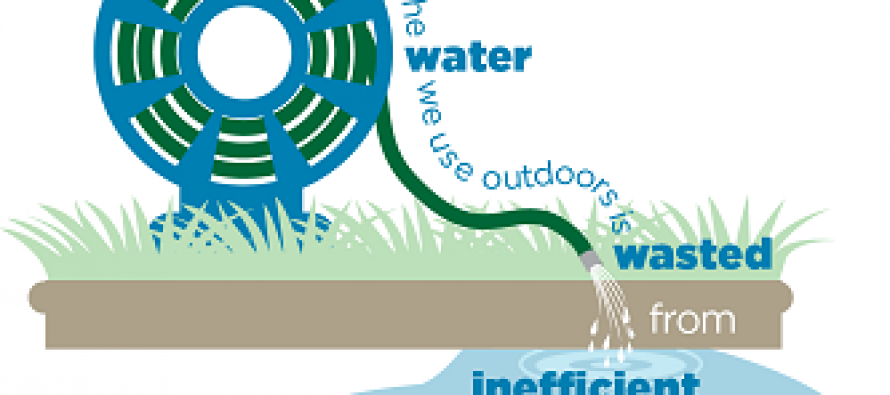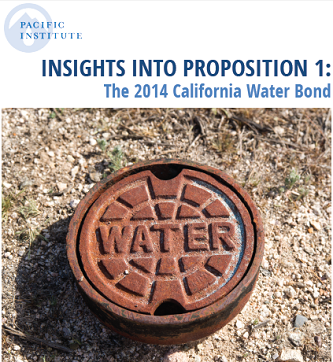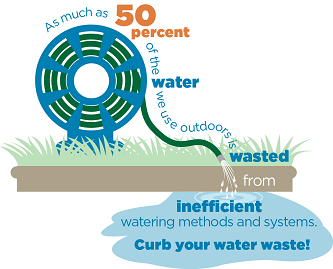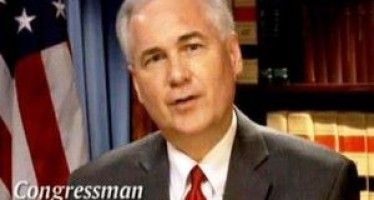Are benefits of Prop 1 being oversold?

 Proposition 1 — a $7.1 billion state bond to pay for a variety of water projects — was billed as a huge improvement over bloated past proposed water bonds when it emerged from the Legislature this summer. Now Gov. Jerry Brown’s political warchest and Sean Parker of Facebook and Napster fame are funding an ad campaign that aggressively pitches the measure and the Prop 2 rainy-day fund as crucial for California’s future.
Proposition 1 — a $7.1 billion state bond to pay for a variety of water projects — was billed as a huge improvement over bloated past proposed water bonds when it emerged from the Legislature this summer. Now Gov. Jerry Brown’s political warchest and Sean Parker of Facebook and Napster fame are funding an ad campaign that aggressively pitches the measure and the Prop 2 rainy-day fund as crucial for California’s future.
This week, however, one of the relatively few think tanks that specializes in water issues came out with a 26-page analysis that in low-key fashion suggests Prop 1’s merits are being exaggerated. The Pacific Institute, based in Oakland, says it is neutral on the measure. But its concluding chapter strongly suggests that the bond is likely to disappoint anyone who sees it as a game-changer for state water policy:
We note that nothing in this proposition will provide immediate relief from the current drought or offer short-term assistance to those suffering the consequences of current water challenges. If Proposition 1 passes, if the funds are designated for effective projects, and if those projects are well-designed and well-implemented, the long-term benefits could include a reduction in the risks of future droughts and floods as well as improvements in the health of California’s aquatic ecosystems. A key priority of the bond is to augment the state’s water supply and improve water supply reliability, with more than $4.2 billion in taxpayer funding dedicated to that priority.
As was the case with the 2010 bond, there is substantial funding in the 2014 bond for the public benefits portions of surface water or groundwater storage projects. The 2010 bond included $3.0 billion directly for water storage; the current language includes $2.7 billion. Because the total size of the 2014 bond is smaller than the 2010 bond, the proportion of total funding committed for storage increased from 30% to 36%. Beyond the eduction in the total allocation from $3 billion to $2.7 billion, the water storage language in the proposed 2014 bond is almost identical to the language in the original 2010 bond.
Far less of the bond funds are available for other water supply and demand management options, including recycled water, stormwater capture, and efficiency. Yet, these options can typically provide more water at lower cost than most storage projects. Funding for water conservation and efficiency is especially low, at only $100 million, or about 1% of the bond.
A down payment on water future “at best”
The think tank also worries that once the bond money is in hand, allocation decisions may be poorly handled.
Ultimately, the effectiveness of Proposition 1 funds in addressing California’s overall water problems will depend on how the funds, if passed by the voters, are actually allocated and spent. If Proposition 1 passes, the Institute recommends that the California Water Commission develop a rigorous, independent, and transparent evaluation of the process governing the evaluation and quantification of the public benefits of proposed storage projects. It also recommends that decisions about the rest of the funds be made with a focus on meeting public and ecosystem needs for safe and reliable water, improvements in efficient use, and reductions in the risks of future droughts and floods.
If good projects are identified and supported, these funds can help move the state forward in the broader effort of designing, building, and managing a 21st century water system. But voters should not expect immediate relief from Proposition 1 for the impacts of the current drought; nor should they expect these funds to be the last investment that is needed for better institutions, smarter planning, and more effective water management strategies. It can be, at best, a down payment on our water future.
The obvious solution that may someday be forced on us
 I’ve always thought that California’s water problems are seen through a distorted lens — one which doesn’t acknowledge that if water use is prioritized, genuine nightmares harming our quality of life are easily avoided.
I’ve always thought that California’s water problems are seen through a distorted lens — one which doesn’t acknowledge that if water use is prioritized, genuine nightmares harming our quality of life are easily avoided.
The U.S. EPA says one-third of residential water use goes to maintain lawns. That’s nearly 9 billion gallons a day. And much of that is wasted.
If we ever had a water shortage so severe that it threatened our economy, stopping the use of water for what might be called cosmetic purposes would be an obvious step. Sorry, but using precious water so folks can have a green lawn should be the lowest water priority of all if the megadrought some expect for the Southwest comes to pass.
Brown lawns or dead lawns, in the grand scheme of things, are not genuine nightmares.
Related Articles
Post-Stockton, Democrat job-retention myth certain to be exposed
Both parties have bogus canards that they trot out when convenient. The worst example of this among Republicans is the
McClintock pushes water storage, public lands access
“I think there’s going to be a concerted effort in the next few weeks to move both short-term and long-term
Pat Wiggins' latest outburst
Senator Pat Wiggins, D-Santa Rosa, is becoming a very sad story. For at least the last year or so, she’s




